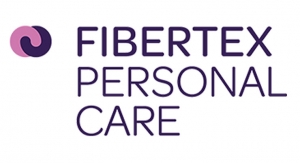01.11.17
Global consumption of sustainable nonwovens in 2017 is 3.7 million tons or 94.8 billion square meters, valued at $14.1 billion, and is due for rapid growth through to 2022, says a new Smithers Pira report.
According to Smithers Pira’s new nonwovens report – The Future of Sustainable Nonwovens to 2022 – sustainability in the nonwovens industry is becoming a major focus for consumers, retailers and producers. The sustainable nonwovens market is smaller, but its growing faster, especially in the more mature markets of Western Europe and North America.
Phillip Mango, author of the report, comments: “The drive for sustainable products and processes in all markets has been growing for the last two decades. For some markets, it has been the fear of global warming driving change, for others, the uncertainty of future petroleum supply and cost, and for others the overflowing landfills. Whatever the driving force, many in the global community desire more sustainable products.
“The nonwovens industry is no different and, in fact, may be even more driven to develop sustainable products due to its high level of dependency on disposable products, many of which are among the most visible products in the world, such as disposable baby diapers and disposable wipes. Consumers, retailers and governments have all viewed these products with questions, desires and sometimes demands.”
The nonwovens market is further analyzed by production process technology—both formation technologies (such as drylaid, spunlaid, airlaid, and wetlaid) and bonding technologies (such as needlepunched, spunlace or hydroentangled, thermal bonded and latex or chemical bonded).
For sustainable nonwovens, drylaid, with spunlace and needlepunch favoured for sustainable nonwovens, leads all processes. In 2012 drylaid accounted for 1.2 million tons of sustainable nonwovens, growing to 2.2 million tons in 2017, with an annual growth rate of 13.0%. By 2022 drylaid will account for 3.2 million tonnes (or more than 61% of all sustainable nonwovens in 2022).
Spunlaid is the second largest process used to process sustainable nonwovens; not because existing products are sustainable, but because this process is currently so large and so important in the nonwovens industry. The cost effectiveness and performance advantages make this technology very difficult to displace; it is more likely that solutions such as recycling and biopolymer raw materials will be found to preserve its usefulness in sustainable nonwovens.
Airlaid is third in usage for sustainable nonwovens. This low energy, low waste process relies heavily on the most sustainable raw material (wood pulp) and is, on average, the most sustainable process. Unfortunately, not all products can be made with airlaid; lightweight (less than 45 g/m2) hydrophobic products are very difficult and expensive. Additionally, global airlaid capacity is limited and expansion is slow.
According to Smithers Pira’s new nonwovens report – The Future of Sustainable Nonwovens to 2022 – sustainability in the nonwovens industry is becoming a major focus for consumers, retailers and producers. The sustainable nonwovens market is smaller, but its growing faster, especially in the more mature markets of Western Europe and North America.
Phillip Mango, author of the report, comments: “The drive for sustainable products and processes in all markets has been growing for the last two decades. For some markets, it has been the fear of global warming driving change, for others, the uncertainty of future petroleum supply and cost, and for others the overflowing landfills. Whatever the driving force, many in the global community desire more sustainable products.
“The nonwovens industry is no different and, in fact, may be even more driven to develop sustainable products due to its high level of dependency on disposable products, many of which are among the most visible products in the world, such as disposable baby diapers and disposable wipes. Consumers, retailers and governments have all viewed these products with questions, desires and sometimes demands.”
The nonwovens market is further analyzed by production process technology—both formation technologies (such as drylaid, spunlaid, airlaid, and wetlaid) and bonding technologies (such as needlepunched, spunlace or hydroentangled, thermal bonded and latex or chemical bonded).
For sustainable nonwovens, drylaid, with spunlace and needlepunch favoured for sustainable nonwovens, leads all processes. In 2012 drylaid accounted for 1.2 million tons of sustainable nonwovens, growing to 2.2 million tons in 2017, with an annual growth rate of 13.0%. By 2022 drylaid will account for 3.2 million tonnes (or more than 61% of all sustainable nonwovens in 2022).
Spunlaid is the second largest process used to process sustainable nonwovens; not because existing products are sustainable, but because this process is currently so large and so important in the nonwovens industry. The cost effectiveness and performance advantages make this technology very difficult to displace; it is more likely that solutions such as recycling and biopolymer raw materials will be found to preserve its usefulness in sustainable nonwovens.
Airlaid is third in usage for sustainable nonwovens. This low energy, low waste process relies heavily on the most sustainable raw material (wood pulp) and is, on average, the most sustainable process. Unfortunately, not all products can be made with airlaid; lightweight (less than 45 g/m2) hydrophobic products are very difficult and expensive. Additionally, global airlaid capacity is limited and expansion is slow.







